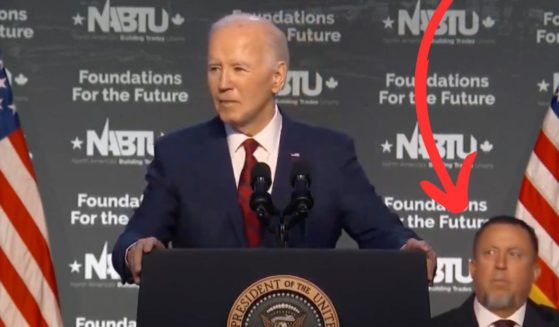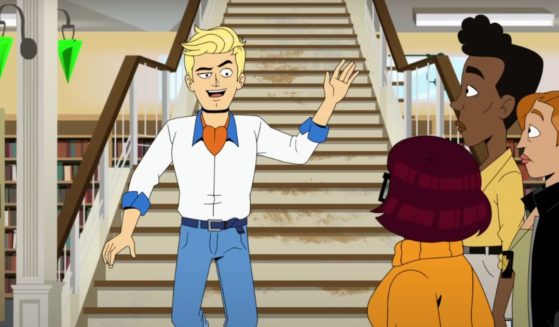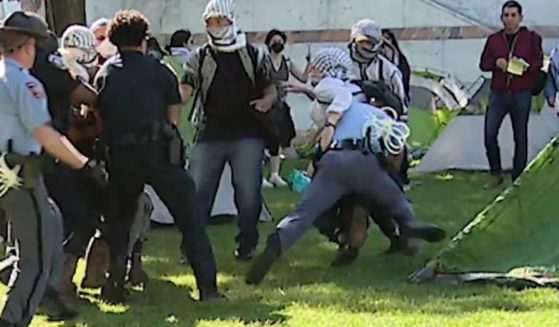Man Stands Outside with a Strange Antenna and Repeats This Phrase - Minutes Later He Gets a Call Nobody Expected
Editor’s Note: Our readers responded strongly to this story when it originally ran; we’re reposting it here in case you missed it.
Ham radio enthusiasts, some say, are a different breed.
Whereas many people spend their free time reading or watching TV or surfing the internet, ham radio operators get a kick out of talking on their radios to strangers across the nation — or even across the globe.
Some have even managed to traverse the final frontier by calling the International Space Station.
One such “ham,” as the operators are affectionately called, posted a video of himself to YouTube over the summer making the ultimate long-distance call.
He gave only his first name, Doug, on his bio, but his YouTube channel uses his ham radio call sign: KB8M — which is pronounced according to the military-style phonetic alphabet: “Kilo-Bravo-Eight-Mike.”
With a large antenna in one hand and a radio in the other, Doug looked up at the sky and repeated the same phrase, over and over.
“NA1SS, NA1SS, Kilo Bravo Eight Mike.
“NA1SS, NA1SS, Kilo Bravo Eight Mike.”
His neighbors must have wondered what in the world he was up to.
Except that Doug wasn’t contacting someone in the world. He was trying to talk to someone above it.
He rotated the antenna in his hand and tried again: “NA1SS, NA1SS, Kilo Bravo Eight Mike.”
Finally, a voice responded over the radio. “Kilo Bravo Eight Mike, NA1SS — [static] you loud and clear aboard the space station. Welcome aboard.”
A delighted Doug radioed right back: “Thank you much, 73.” (“Seventy-three” is ham-speak for “best regards.”)
“Wow, that’s impressive,” Doug told his YouTube audience. “I had seen on Facebook that they were making some random contacts, so I set the antenna up quick.”
He explained some of the techy details — how he had set up his standard antenna with a home-built duplexer for Very High Frequency and Ultra High Frequency and connected it to his FT-60 handheld ham radio.
“That’s really cool,” he beamed. “First time.”
“I’ve made numerous voice and APRS contacts over the FM satellites and the ISS repeater,” Doug explained on the YouTube page, which has over 318,000 views. “But I’ve always wanted to talk to an astronaut.”
The moment made it a red-letter day for any amateur radio enthusiast — perhaps the most prestigious contact a ham operator can make, according to the ham radio site World Radiosport Team Chamionship, which said that most of those on board the ISS are licensed amateur hams in their home countries.
There are a number of such ISS encounters on YouTube, including some on NASA’s channel, where Expedition 25 commander Doug Wheelock in 2010 gave a video tour of the ISS ham radio setup, which is located in the Russian segment of the space station.
There’s even an educational program, ARISS — Amateur Radio on the International Space Station — designed to use such out-of-this-world encounters to spark the imagination and enthusiasm of students to pursue careers in science and technology by allowing young people to chat with astronauts in space.
ARISS volunteers from Europe, Japan, Russia, Canada and the U.S. use the platform of amateur radio to help students all over the world get excited about space exploration and communication.
For example, on Oct. 10 the ISS crew contacted students at Covenant Christian Academy in West Peabody, Massachusetts, as well as students at Sekolah Kebangsaan Wangsa Maju Seksyen 2 in Kuala Lumpur, Malaysia. The week before they chatted with students at the Technological University in Dublin, Ireland, and 149 Secondary School in Baku, Azerbaijan.
During the 10-minute meeting, they discuss such topics as their personal and educational backgrounds, explain the experiments they’re conducting and talk about their scariest or most memorable experiences in space.
In addition to being a great public relations tool for their hobby, the ARISS program allows ISS crews to interact with friends, family and the world community from their temporary home in outer space. Ham radio also provides a contingency communications system for NASA and the ISS, according to the organization’s website.
But you don’t have to be a kid to get excited about talking to astronauts orbiting the earth, as Doug’s YouTube video proved.
“Over the Memorial Day weekend, I finally made that contact,” he wrote to his followers. “I made contact with the ISS and talked to [U.S. astronaut] Woody Hoburg. What a thrill.”
Truth and Accuracy
We are committed to truth and accuracy in all of our journalism. Read our editorial standards.












